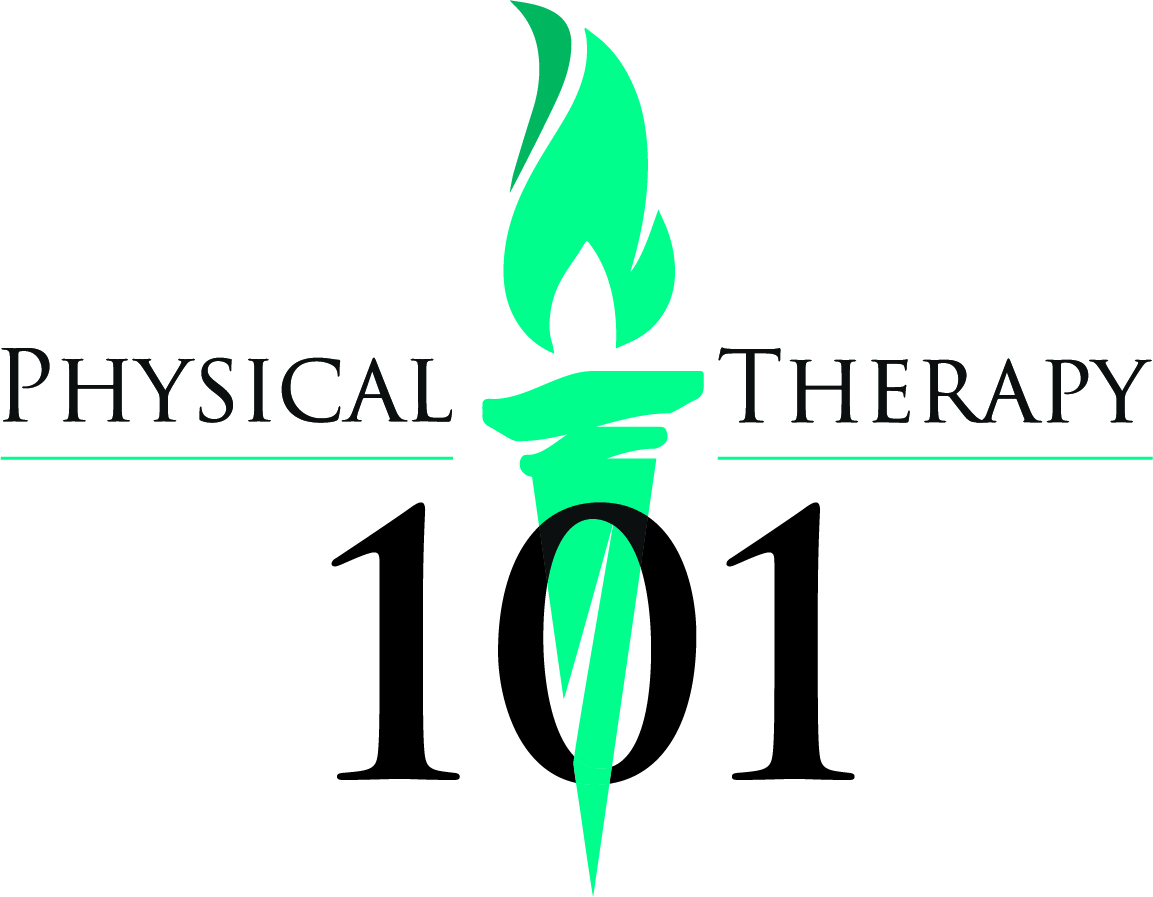Background
The Iliotibial Band (IT Band) is a section of dense tissue that runs along the side of the thigh.
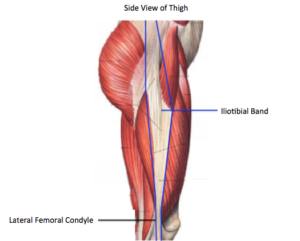
IT Band Syndrome is the inflammation of the IT Band which commonly results in lateral knee pain. The proposed mechanism of injury is that flexion and extension activities at the knee cause friction at the femoral epicondyle resulting in this inflammation. Potential risk factors for this condition are the following:
- Iliotibial band tightness
- Lack of flexibility in the thigh musculature
- Weakness in lower leg musculature
- Long distance running/walking
Stretches for the IT Band and strengthening to the proper lower extremity musculature are proven treatments to help relieve this condition.
More Information:
Recommended Products
Treatment
To help alleviate pain or tightens of the IT Band, you much stretch the band as well as the muscles that surround it.
A seated Hamstring stretch is a great way to start. Sit on a yoga mat or therapy table in order to perform the stretch. Perform this 3-4 times and hold for 15-20 seconds.
Seated Hamstring Stretch
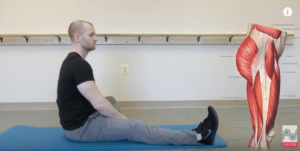
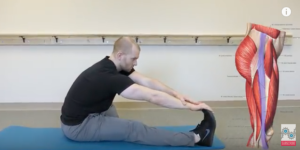 With the help of a stretch strap placed around your foot, lie on your back and pull your leg upward. Make sure to keep the knee locked out. Perform this 3-4 times and hold for 15-20 seconds.
With the help of a stretch strap placed around your foot, lie on your back and pull your leg upward. Make sure to keep the knee locked out. Perform this 3-4 times and hold for 15-20 seconds.
Hamstring Stretch Lying on Back With Strap
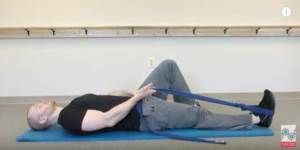
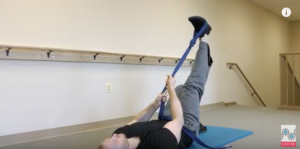 Now let the leg fall inward while keeping the knee locked with the strap. Moving the foot up or down will help change the angle of the stretch. Do your best to keep the hip down. Perform this 3-4 times and hold for 15-20 seconds.
Now let the leg fall inward while keeping the knee locked with the strap. Moving the foot up or down will help change the angle of the stretch. Do your best to keep the hip down. Perform this 3-4 times and hold for 15-20 seconds.
IT Band Stretch Lying on Back With Strap
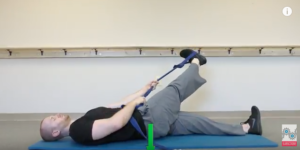
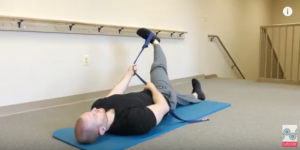
A tight Quadricep muscle will affect your IT Band as well. Start by lying on your on your side and use your stretch strap to assist. Pull your foot to your backside, and then extend your hip. Make sure to not arch the back. Perform this 3-4 times and hold for 15-20 seconds.
Side Lying Quadriceps Stretch
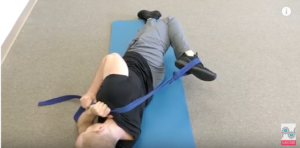
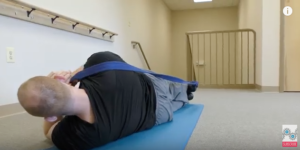
Quadricep stretching may also be done prone or standing. To perform prone, lay on the yoga mat or therapy table and keep the strap around your foot.
Prone Quadriceps Stretch
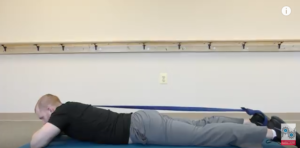
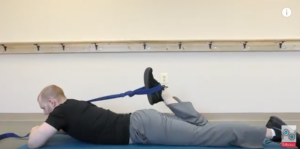
Standing Quadriceps Stretch
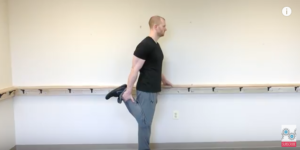
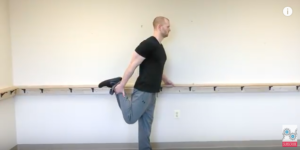
Be sure to keep the back straight at all times during these stretches!
Incorrect
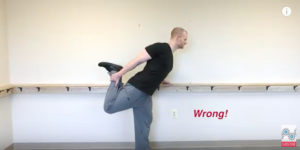
Next, move a few feet away from a wall. Now lean against the wall. Hold yourself up with your elbow. While keeping the feet together, push the side to be stretched towards the wall. Perform this 3-4 times and hold for 15-20 seconds.
IT Band Stretch on Leaning on Wall
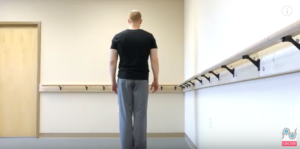
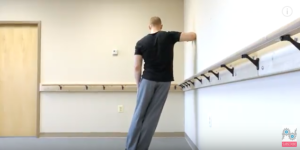
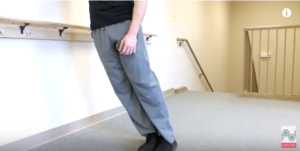
To try a more advanced way, cross the outer foot over the side being stretched and try again.
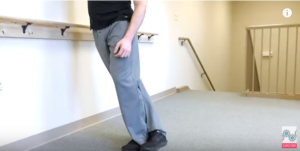
This time try it without leaning against the wall. Cross the non-involved side over the involved side, push your involved side hip out and reach down and across.
IT Band Stretch Without Wall
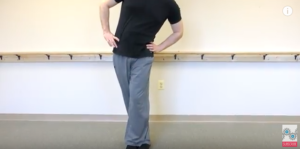
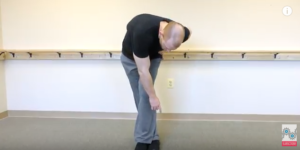
A figure four stretch is done by crossing the involved side on the opposite leg. Now pull the bottom leg up to your chest. A stretch strap may help, but is not required. Perform this 3-4 times and hold for 15-20 seconds.
Figure Four Stretch With Strap
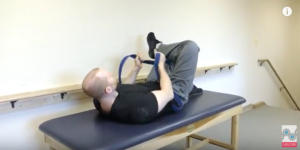
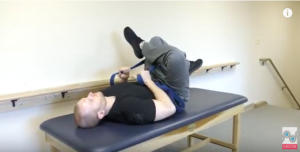
Figure Four Stretch Without Strap
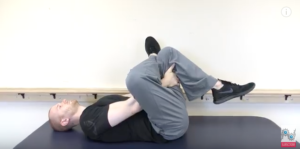
Next, position yourself side lying on a surface such as a therapy table, with your involved side up. Drop your leg behind you. Try not to allow your hip to pop up. Perform this 3-4 times and hold for 15-20 seconds.
Side Lying IT Band Stretch
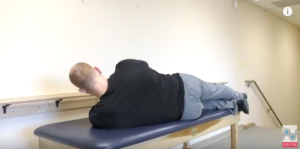
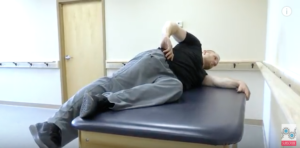
More advanced stretching can be done from the position shown here. Get into position and cross your involved size over your bottom leg. Use both arms to pull your knee to your chest. Now push your knee towards the floor.
Seated IT Band Stretch
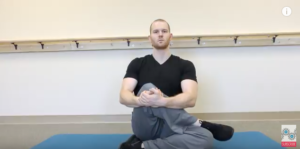
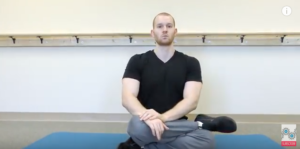
Another advanced stretch can be done from the position shown here. Make sure your involved side is the front leg.
Advanced Seated IT Band Stretch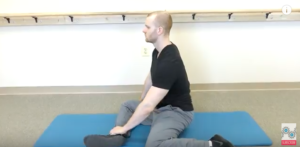
Get into the position and lean your chest towards your front knee.
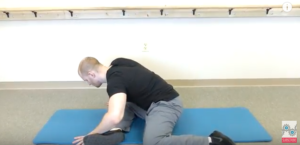
By picking up your back foot up, you will get an additional stretch. Perform this 3-4 times and hold for 15-20 seconds.
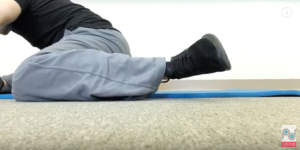
References
Beals C, Flanigan D. A Review of Treatments for Iliotibial Band Syndrome in the Athletic Population. Journal of sports medicine. 2013;2013:367169. doi:10.1155/2013/367169.
Lavine R. Iliotibial band friction syndrome. Current Reviews in Musculoskeletal Medicine. 2010;3(1-4):18-22. doi:10.1007/s12178-010-9061-8.
